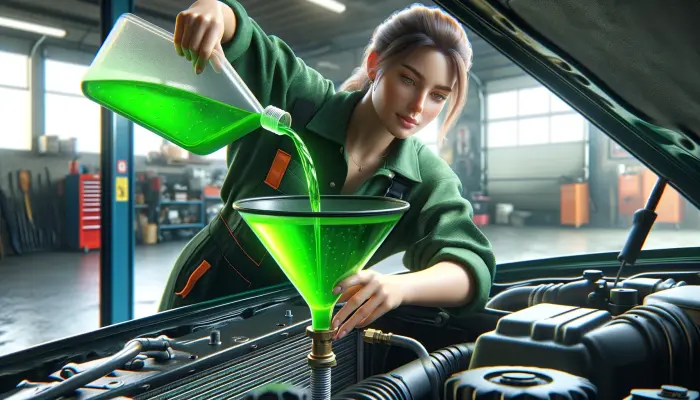Coolant, or antifreeze, is a vital component for any automotive engine. It circulates through the cooling system, removing excess heat from the engine and preventing it from overheating. Timely replacement of the coolant is key to maintaining efficient engine operation and prolonging its lifespan. In this article, we will discuss the importance of timely antifreeze replacement, describe the replacement process in detail, and provide valuable tips for maintaining the cooling system.
Importance of Coolant for the Engine
An internal combustion engine generates a tremendous amount of heat during operation. If this heat is not dissipated, it can damage internal engine components such as pistons, valves, and the cylinder head. Coolant plays a vital role in removing this excess heat, ensuring optimal engine operating temperature.
Modern coolants contain special additives that prevent corrosion, scale formation, and foaming. Over time, these additives lose their effectiveness, which can lead to cooling system damage and, consequently, engine overheating.
When Is Coolant Replacement Necessary?
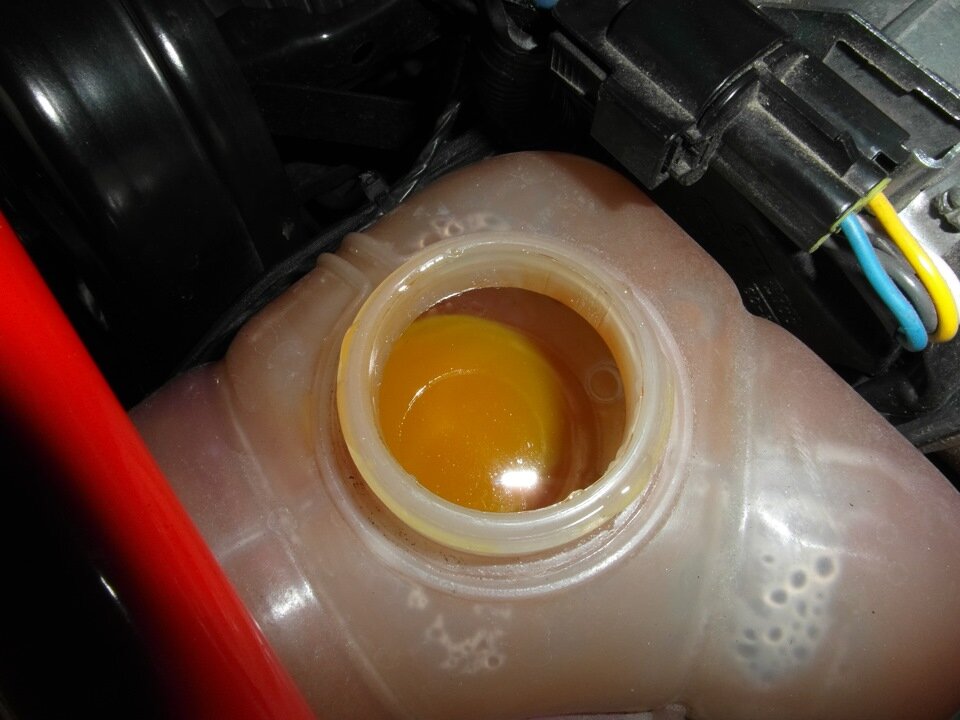
Recommendations for coolant replacement can vary depending on the car manufacturer and the type of antifreeze used. Generally, it is recommended to replace the coolant every 30,000 - 60,000 km or every 2-4 years, whichever comes first.
However, there are some signs that indicate the need for an earlier coolant replacement:
- Change in antifreeze color (it usually becomes brownish or cloudy)
- Presence of sediment or impurities in the coolant
- Signs of corrosion in the cooling system
- Engine overheating
- Coolant leaks
Timely replacement of antifreeze can help prevent costly repairs to the cooling system and protect your engine from overheating and damage.
Preparing for Coolant Replacement
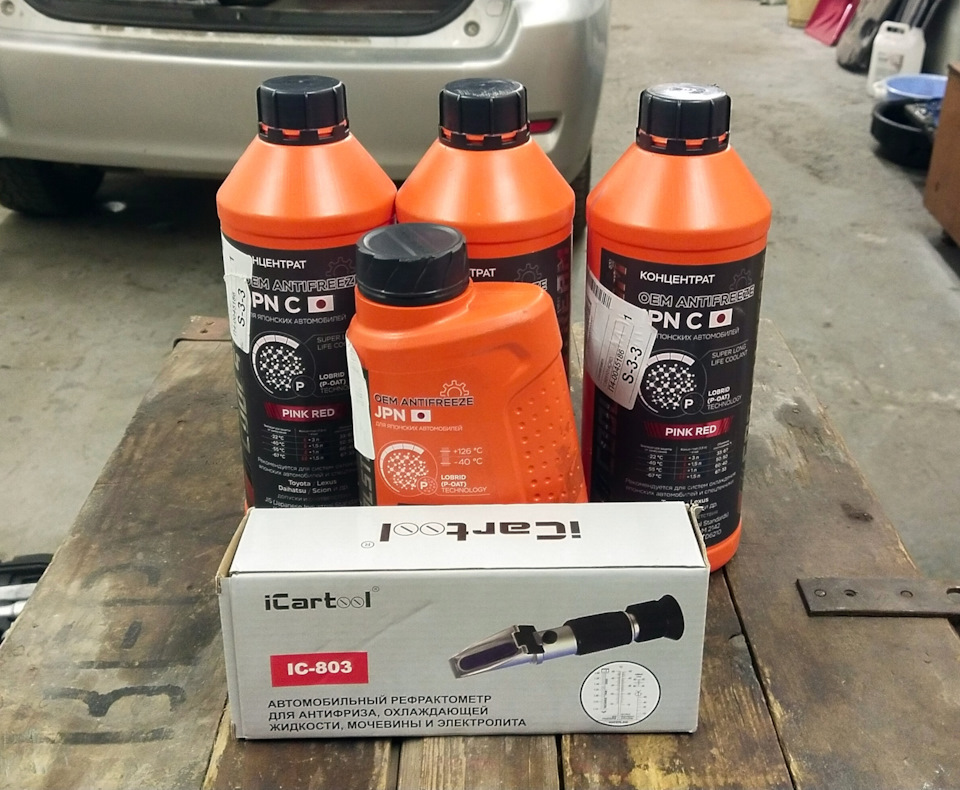
Before starting the coolant replacement, you need to prepare all necessary materials and tools. Let's see what you will need.
Choosing Quality Antifreeze
The market offers a variety of different brands and types of coolants. When choosing antifreeze, follow the recommendations of your car manufacturer. Pay attention to the composition and lifespan of the coolant.
There are two main types of antifreeze:
- Traditional coolants based on ethylene glycol. They provide reliable protection against freezing and overheating but require more frequent replacement.
- Modern coolants based on propylene glycol. They are more environmentally friendly and long-lasting but are more expensive.
Required Tools and Materials
To successfully replace the coolant, you will need the following tools and materials:
- New coolant (antifreeze)
- Container for draining old coolant
- Wrenches and screwdrivers for accessing the drain plug
- Funnel for pouring new fluid
- Gloves and protective glasses (antifreeze is toxic)
- Rags for wiping spills
With everything you need at hand, you can quickly and safely perform the coolant replacement.
Coolant Replacement Process
Now that all necessary materials and tools are prepared, you can proceed with the coolant replacement process. This process consists of several important steps that must be performed in the correct order.
Draining Old Coolant

Before pouring new coolant, you need to completely drain the old one. Follow these steps:
- Wait until the engine has completely cooled down.
- Locate the drain plug at the bottom of the radiator or engine block.
- Place a container under the drain plug to collect the old coolant.
- Open the drain plug using a wrench and allow the old coolant to completely drain out.
Remember to take precautions when working with antifreeze, as it is toxic.
Flushing the Cooling System
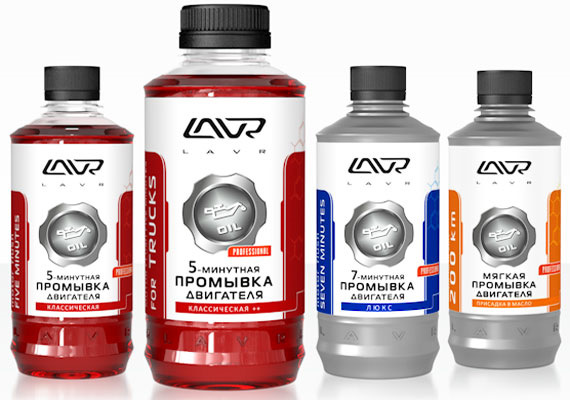
After all the old coolant has been drained, it is recommended to flush the cooling system. This will help remove any remaining impurities, deposits, and traces of old antifreeze, ensuring more efficient operation of the new coolant.
To flush the cooling system, you can use special flushing solutions or just clean water. Pour the flushing liquid through the radiator neck, start the engine, and let it run for a few minutes so the fluid circulates throughout the system. Then drain the flushing liquid just as you drained the old antifreeze. Repeat this process several times for better results.
Pouring New Coolant
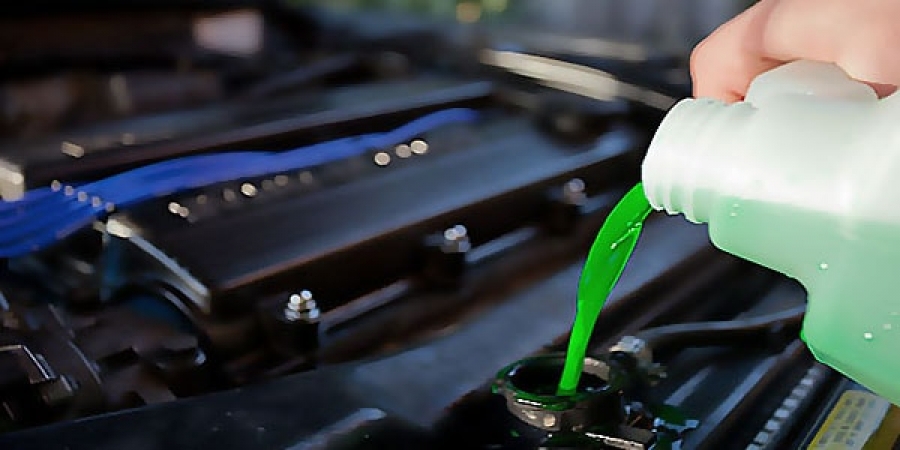
After flushing the system, it's time to pour in the new coolant. This is an important step that will affect the efficiency of the cooling system in the future.
- Prepare the required amount of new coolant according to the manufacturer's recommendations.
- Using a funnel, carefully pour the new antifreeze through the radiator neck.
- Start the engine and let it idle for a few minutes to allow the new coolant to distribute throughout the system.
- Check the coolant level in the expansion tank and top it up to the recommended mark if necessary.
Be sure to tightly close all caps and plugs after pouring the new coolant.
Checking and Fixing Leaks
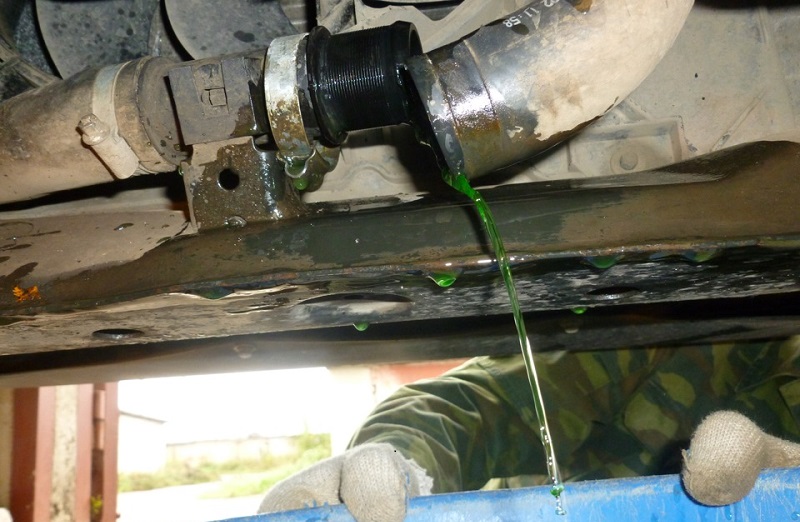
Even after a thorough coolant replacement, leaks can occur in the cooling system. Prompt detection and repair of leaks are important to prevent loss of coolant and, consequently, engine overheating.
Visual Inspection of the Cooling System
The first step in checking for leaks should be a visual inspection of the entire cooling system. Pay attention to the following areas:
- Radiator and radiator hoses
- Water pump
- Head gasket
- Expansion tank
Any signs of moisture, oxidation, or antifreeze streaks may indicate a leak.
Leak Detection Methods
If visual inspection does not reveal obvious leaks, you can resort to more thorough leak detection methods:
- Using a leak detector (soap water solution, leak detection spray)
- Performing a pressure test on the cooling system
- Using an ultraviolet leak detector to find leaks invisible to the eye
Regular use of these methods will help detect even the smallest leaks in time.
Fixing Leaks in the Cooling System
Once a leak is detected, you must immediately address it. This may involve replacing damaged hoses, gaskets, or other repair work. In some cases, larger components such as the radiator or water pump may need to be replaced.
It is important to fix all leaks before pouring in new coolant, as continuing to operate with a leak can lead to serious engine damage.
Additional Tips and Recommendations
Besides the actual procedure of coolant replacement, there are additional recommendations that can help prolong the life of the cooling system and prevent future problems.
Periodic Checking of Coolant Level
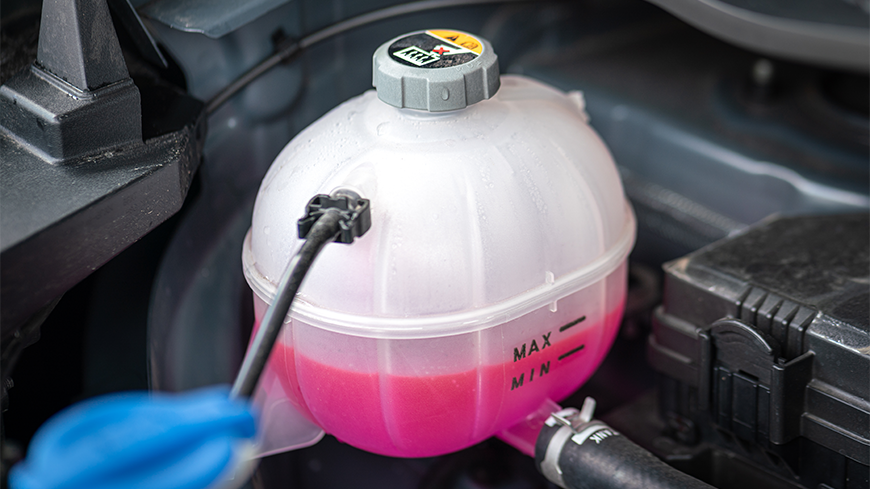
After replacing the coolant, it is important to regularly check its level in the expansion tank. Over time, small leaks or evaporation can lead to a decrease in the antifreeze level, which can cause engine overheating.
Check the coolant level at every service or every few months. Timely topping up antifreeze can help avoid serious problems.
Using Additives to Prolong Antifreeze Life
There are special additives on the market that can be added to the coolant to extend its life. These additives contain components that prevent corrosion, scale formation, and foaming.
Adding such additives according to the manufacturer's instructions can significantly increase the intervals between coolant replacements, saving you time and money.
Checking Thermostat Functionality
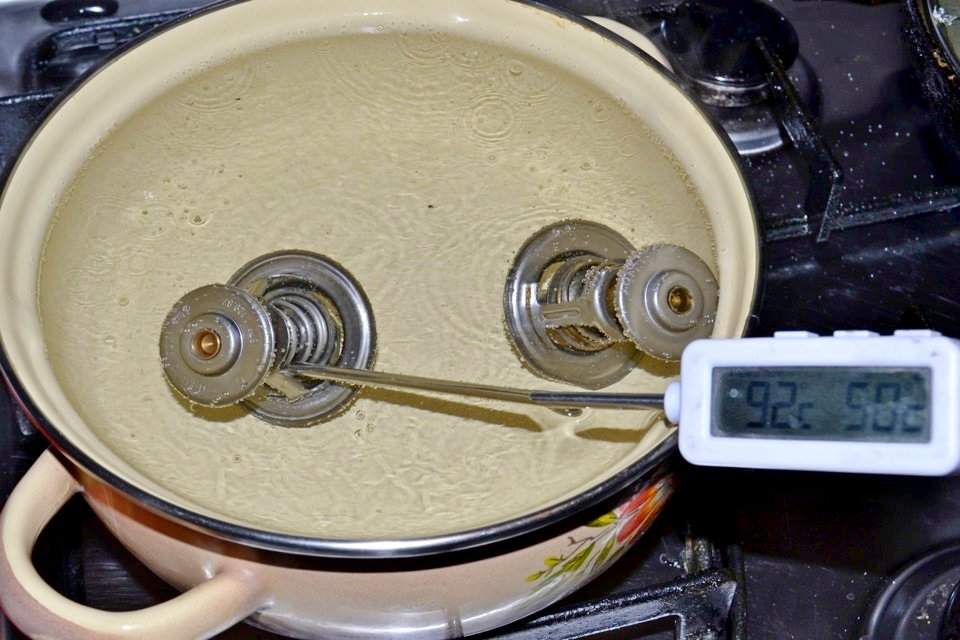
The thermostat is an important component of the cooling system, regulating the flow of coolant depending on the engine temperature. A faulty thermostat can lead to engine overheating or undercooling, so its check and timely replacement are of great importance.
There are several ways to check thermostat functionality:
- Visual inspection. Remove the thermostat from the cooling system and inspect it for signs of damage, corrosion, or deposits. Also, check whether the thermostat valve opens and closes freely.
- Checking with a container of hot water. Place the thermostat in a container of hot water and observe its operation. When a certain temperature is reached, the thermostat valve should begin to open, allowing water to pass through it. This will help assess the thermostat's functionality.
- Checking the opening pressure. Using a special tester for thermostats, you can determine the pressure at which the thermostat valve starts to open. This pressure should correspond to the manufacturer's specifications.
If the thermostat does not open at the set temperature, opens too early or too late, or if its valve jams, the thermostat should be replaced with a new one. Timely replacement of the thermostat will help maintain the optimal engine temperature and extend the life of the cooling system.
Remember, it's best to entrust the replacement of the thermostat to a qualified mechanic if you are not confident in performing this procedure yourself.
Regular checking and timely replacement of the thermostat is an important part of cooling system maintenance, which will help avoid engine overheating or undercooling and related problems.
Common Mistakes in Coolant Replacement
Despite the apparent simplicity of the coolant replacement procedure, there are a number of common mistakes to avoid to prevent damage to the engine or cooling system:
- Using incompatible antifreeze. Mixing different types of coolants can lead to the formation of harmful chemical compounds and deposits in the cooling system. Always use antifreeze recommended by your car manufacturer and do not mix different brands or types of coolants.
- Inadequate flushing of the cooling system. If the cooling system is not fully flushed before pouring new antifreeze, remnants of old coolant and impurities can reduce the effectiveness of the new fluid and accelerate its decomposition.
- Overtightening or undertightening connections. When installing drain plugs, caps, and hoses, it's important to adhere to recommended torque settings. Excessive tightening can damage the thread, and insufficient tightening can lead to coolant leaks.
- Ignoring leaks. Even small coolant leaks can lead to serious problems if not addressed in time. Before pouring new coolant, thoroughly check the system for leaks and fix them.
- Insufficient cooling of the engine before starting work. Working with a hot engine and cooling system can lead to serious burns. Always wait for the engine to cool down completely before starting any work on the cooling system.
By avoiding these common mistakes, you will protect yourself and your car from potential problems and damage.
Professional Maintenance of the Cooling System
If you are not confident in the process of replacing coolant or detecting and fixing leaks, it is better to entrust this work to professionals. Qualified mechanics have the necessary knowledge, tools, and experience for safe and effective maintenance of the cooling system.
Regular professional maintenance can reveal hidden problems and prevent more serious damage in the future. This is especially important for older or high-mileage vehicles.
Conclusion
Timely replacement of coolant is a vital procedure for maintaining the effective operation of your engine and preventing costly repairs. By following the advice and recommendations in this article, you can properly prepare for antifreeze replacement, safely and effectively carry out the procedure, and prevent leaks and extend the life of the cooling system.
Do not forget to regularly check the coolant level, top it up as needed, and turn to professionals for technical maintenance of the cooling system. Careful attention to this important system will extend the life of your engine and ensure its reliable operation for many years.
Remember, proper coolant replacement is not only a necessary procedure, but also a kind of investment in the safety and longevity of your car. Do not neglect it, and your engine will serve you faithfully for many years.
In conclusion, it is worth noting that although the replacement of coolant may seem like an uncomplicated task, it requires attentiveness, accuracy, and adherence to all necessary safety measures. Do not ignore the manufacturer's recommendations and professional advice, as it concerns the health and longevity of one of the most important components of your car - the engine.
Timely and proper antifreeze replacement is the key to peace of mind and confidence that your car will serve you reliably, even in the harshest operating conditions. Take this procedure seriously, and your engine will thank you with many miles of flawless operation.
